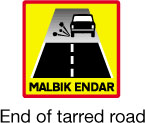Useful information and road signs; this blog has a lot of tips about driving in Iceland
We at SADcars sometimes say that Iceland is a like a natural theme park with 14.000 km of roads - the Iceland park if you will. But the rules about how to conduct yourself in the Iceland park might not be written on a big board at the entrance to the park.
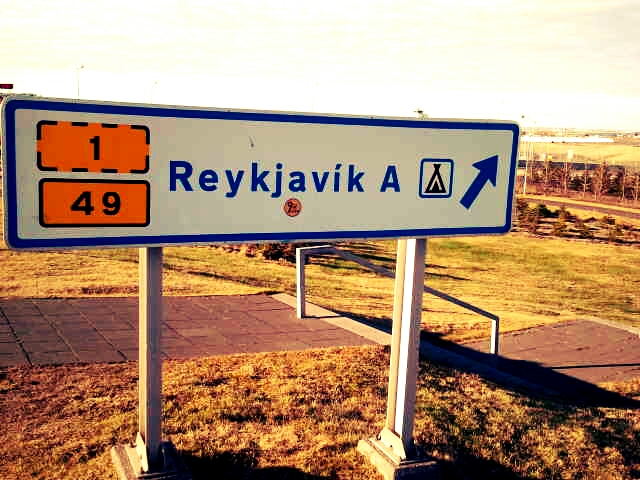
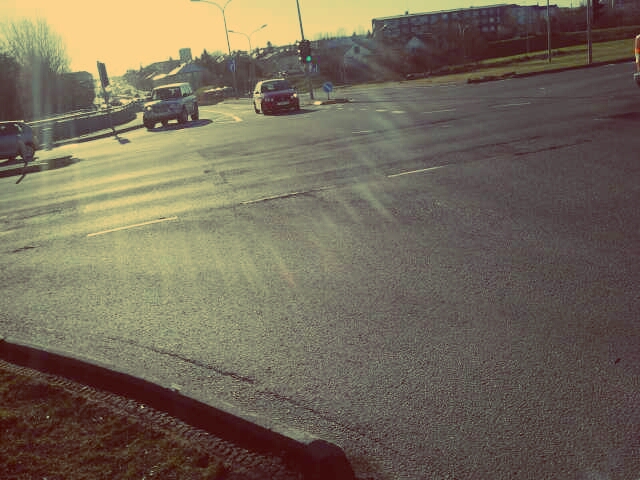
A few days ago a customer pointed out to me after his trip that he felt it was hard to drive in Iceland because all the signs and instruction were in Icelandic. This blog is an effort to combine in one place useful information and tips for when you will start brave the Icelandic roads. Note: this list is by no means a complete list of everything you need to know, for more information you can check out the links at the bottom.
Icelandic roads and road signs
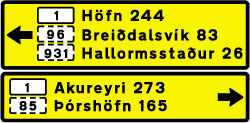

The ring road, nr.1, is rather accessible. It circles around the island excluding the western fjords so chances are you will be on it a lot. All roads are numbered so bring a map on your journey, either the Big map you can pick up for free at every gas station or a more detailed Road Atlas, also available at the gas stations (or the SADcars offices). Most of the ring road and roads in Reykjavik are asphalt roads but when you get off the main roads you will find yourself on gravel roads, especially in the Western fjords. Typical road signs can be seen above, you can see the number of the road in front of the name of the town. Road signs in the country are yellow except for road signs in Reykjavik, they are blue. The red signs are for places of interest, this one is for a museum.
Speed limit
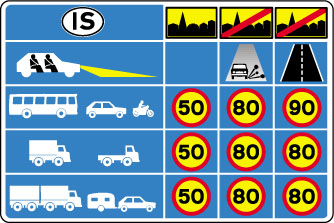
As you can see on the road sign above the speed limit is 50 km/h in urban areas, 80 km/h on gravel roads and 90 km/h on asphalt roads. These are maximum speed limits and there are no road signs that caution you to reduce speed so please drive at a speed that is safe based on your conditions and surroundings. There are some road signs that indicate dangers ahead though, lets have a look at some of them.
Reasons to slow down and watch out
Iceland still has many gravel roads, such as mountain roads, roads in the interior of Iceland, the western fjords and even parts of road 1. You can usually drive your rental on all gravel roads except the ones marked F, they are highland roads and should only be driven on 4x4 vehicles. Most accidents on gravel roads happen when drivers are switching from asphalt to gravel. There is a risk of losing control of the car so reduce your speed when you see the sign above. The surface of gravel roads is loose, especially on the sides, so it is best to slow down when you approach a car ahead. You are also in more risk of getting a flat tire if driving too fast on gravel roads and hit a rock, it is simply best to drive slow on gravel roads! You might also consider getting gravel protection insurance such as SADcars offer.


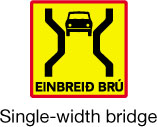
Many roads in Iceland are winding and narrow, especially mountain roads. They are not made for speeding! You will often have to meet oncoming cars on these roads, indicated by the road signs above. Be careful at all times.
A charming part of the Icelandic countryside is all the rivers flowing through it. A small downside is that you will have to cross many of them on single-width bridges. The general rule here is that the driver that approaches the bridge first has the right of way. A lot of drivers give a little wave as a thank you when they pass the driver that is waiting on the other side.

There are a lot of blind rises in Iceland, I mean a lot! When you see the above road sign make sure you keep to the right and slow down. You never know what might be around the bend, animals for instance.
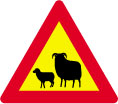
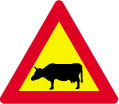
Yes, these are actual road signs and there is an actual danger. :) Watch out for farm animals, especially sheep, and reindeers. When passing animals, slow down and be aware. The animals may bolt on the road at any time and if you hit one, you might be liable for loss of the animal and/or damages to the car.
Sometimes, farmers try to keep sheep from traveling from one area to another. When this is the case, there might be a sort of a sheep fence on a small part of the road, about two meters long, so the sheep cannot cross that section. You will hear a loud, short noise when you drive over these “fences“ but there is no need to be alarmed.
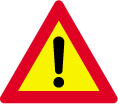
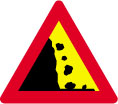
There are other dangers but I believe I have covered the most common ones for when traveling in Iceland. The road sign on the left means Other dangers which in my book basically means slow down. :) The sign on the right indicates that there is a risk of falling rocks or avalanches.
The weather in Iceland can be very unpredictable and the forecast can change greatly during your journey, especially on mountain roads. Sometimes, snowstorms, harsh rainstorms or fog can make it impossible to see the road ahead. The solution we have for this is sticks that are situated alongside roads with equal distance apart. These sticks will reflect the light from your headlights so when the weather is really bad, you can follow them. Handy solution right? You can see them beside the road on the pic below, hopefully you will not have to use them though!
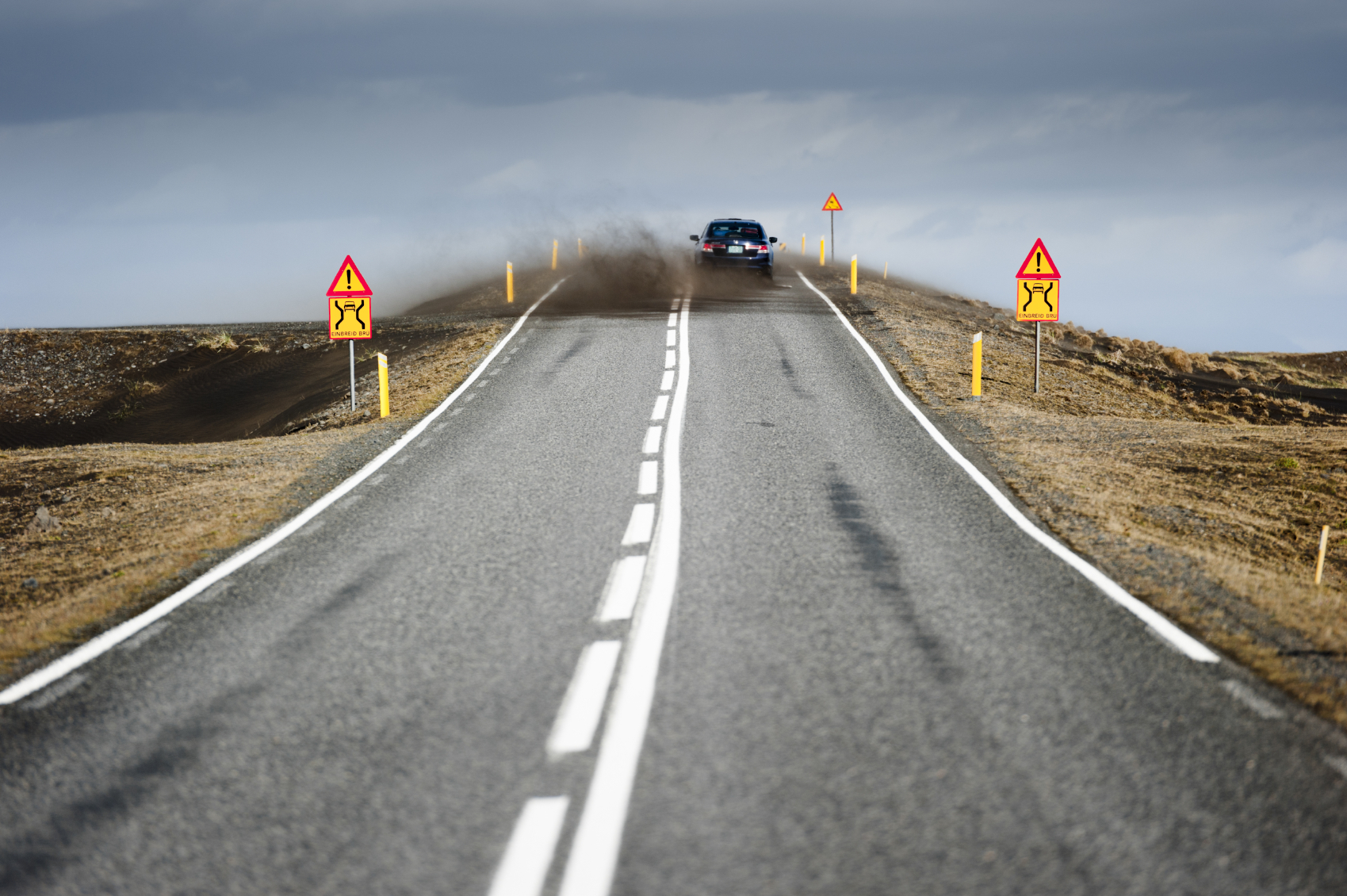
If you head east out of Reykjavik to go to the south of the country then you will most likely drive by car wrecks with a cross and a number. The number indicates how many people have died in car accidents during the year and is a reminder to slow down. It always works for me, for a little while at least.
Lastly, always bring warm clothes with you on the road. The weather might change at a moment’s notice and if you get a flat tire in the cold harsh Icelandic weather it will be more bearable if you can bundle up!
Some rules and laws (and tips)
- You need to have your lights on at all times, in summer and in winter, even when it’s bright outside.
- You cannot talk, text or write e-mails on your mobile while driving. There is obviously no drinking and driving.
- When you are at a four way intersection, the rule is that the car to your right has the right of way. In many residential neighborhoods in Reykjavik there are no stop or wait signs, then the car to your right has the right of way as well.
- In roundabouts it is the car on the inside that has the right of way. I have been told this is unusual.
- You cannot turn right on a red light. Only drive when the light is green.
- Please be aware that off-road driving in strictly forbidden by law in Iceland as it damages nature for decades. If the road does not have a number, do not drive on it, even if there are tire tracks. Those who drive off-road are subject to excessive fines or imprisonment of up to two years.
Useful links about driving in Iceland
Free app about Icelandic traffic signs (can be used offline).
What do you think you guys that have driven in Iceland, did I forget something important? If you have tips feel free to drop me a line at info@sadcars.com. You can also find some useful information about driving in Iceland below. Other than that, I think you are about ready to go out and enjoy our natural theme park now, 14.000 km of roads for you to enjoy...maybe on your SADcar. :)
Signy

